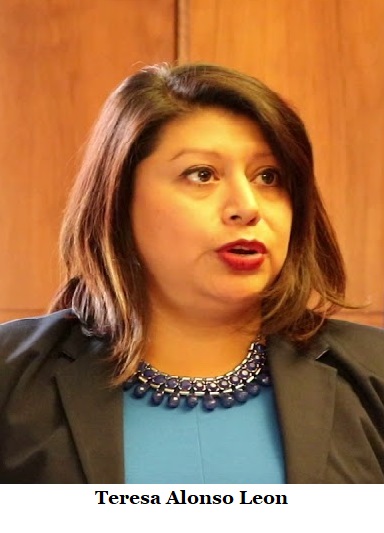 Post an Event
Post an Event
| Benton County Republicans’ Private Fundraising Event, “Bent-on Boots and Bling” with Trey Taylor |
| Friday, September 5, 2025 at 5:00 pm |
| Featuring Trey Taylor
Music Private Event
Friday, September 5, 2025 5:00-5:30 pm VIP Reception
5:30-8:00 pm Heavy Appetizers,
Auction, Concert
Red: $750 VIP Reception
Front Row Table Sponsor
White: $500 Table Sponsor
Blue: $50 per person
Limited Seating. Get Yours Now!!!
Support Local
Dress up: Bling, Cowboy, Patriotic Benton County Republican
FUNDRAISER
www.BentonGOP.org
Get your tickets today at:
https://www.bentongop.org/event-details/benton-county-republicans-fundraiser/form
About Trey:
Trey is the youngest African American Man in Country Music History. The Denver Post wrote
"It's impossible to miss his enthusiasm. With a fondness for cowboy boots, gaudy colors and dazzling jewelry, Trey Taylor could stand toe to toe with any of the Pop, Country or even Rap
contemporaries of his generation.“ |
| Trysting Tree Golf Club, 34028 NE Electric Rd., Corvallis |
New plan allocates millions in taxpayer dollars for politicians
After refusing to fully fund schools by $300 million, proposal from House Democrats would fund elections for political candidates
A proposal from House Democrats will soon be up for a vote to allocate possibly $66 million every two years for candidates running for political offices in Oregon.
HB 2680, introduced by State Representative Dan Rayfield (D-Corvallis) allocates $6 taxpayer dollars for every eligible dollar received if a political candidate meets certain criteria. The cap is $400,000 for candidates running for an Oregon House seat and $600,000 for a candidate running for an Oregon Senate seat.
“Budgets express priorities,†said House Republican Leader Christine Drazan (R-Canby). “Republicans believe that we should be using taxpayer dollars this year to fully fund education so schools can fully reopen by the fall. Democrats are choosing to fund political ambitions instead. That’s a decision they’ve made, and it’s wrong.â€
--Staff Reports| Post Date: 2021-06-16 11:28:00 | |
The Legislature will run it’s course with no public presence
The end of the 2021 Legislative Session is a week away, and everything is in fast pace. The public has been locked out of the capitol for hearings, and technical issues have prevented many from testifying. But it goes deeper, procedures are set to determine the outcome halfway through the process. Bills that have a financial impact are sent to the Joint Committee on Ways and Means directly from the originating committee.
Before we go further, the process is for a bill to work through both Houses refining the policy issues, but there doesn’t seem to be any history of how a bill needing financial appropriations is allowed to interrupt that process. It has been done this way for the past 15 years -- as far back as OLIS records go.
There is bi-partisan questioning this process. Senator Chris Gorsek (D-Troutdale) and Senator Bill Hansell (R-Athena) were both concerned with the process and Gorsek stated “it’s unfortunately how these things are structured because subcommittees aren’t setup to deal with policy.†Hansell agreed and questioned having big package bills rushed through by the subcommittee and not given “due process†venting for policy.
When the originating committee completes its review on a bill that has a financial impact, they pass it out to the Joint Committee on Ways and Means. There they are farmed out to subcommittees for a work session to chew over amendments for funding requests. This is done in a vacuum as if there were unlimited funds. The bill has not been fully vented by both houses, so in essence, their vote is based on their own agenda and moral views on what the bill does. The bill is then returned to the full Ways and Means committee, which takes the recommendation of the subcommittee and drills through our money like there is no tomorrow.
The Full Joint Committee on Ways and Means is simply a test of whether the bill will pass on the floor. There is no real discussion in work sessions. All the work is done behind closed doors balancing budget items within the statutory limits based on what the committee leaders want to see funded. That’s the only way that Ways and Means can possible get votes on 44 bills in 2-3 hours on the agenda this week. Included on the list are five full agency budgets. These bills are only heard in Ways and Means Subcommittees.
A D V E R T I S E M E N T

A D V E R T I S E M E N T
What this process does, by going through Ways and Means before it goes to the second House, is it makes the second House simply a formality without meaning. By the time it reaches the second House everything is settled.
The process doesn’t just short cut the process, but it denies half of our representation. It also denies us the public hearing opportunity to be heard when it counts, prior to decisions made. Quite often a bill is heard in the first house before many are aware of its existence, and now the hearing in the second house has been rendered meaningless.
When one party controls both Houses and the Administration, it doesn’t leave any room for opposition.
--Donna Bleiler| Post Date: 2021-06-15 22:46:49 | |
He says he understands budget, law, and most importantly how to listen
More and more people are thinking this state needs a business owner for governor to get us in the right direction. Darin Harbick thinks he has the experience, even though he isn’t political. He is selling his Takoda’s Restaurant to his daughter and son-in-law to give him the time to run for governor.
Darin Harbick has experienced first-hand the obstacles of building a business from the ground up and wants to help those Oregonians who have aspirations of owning a business. At one time Darin operated five businesses and managed over 100 employees. When he learned about the need in Oregon to help those with mental health problems, opioid addiction, and homelessness he and his wife, Kail, began a five-bed recovery center for those who are suffering.
Darin Harbick, born and raised in Lane County, has served 14 years on the McKenzie School Board, 15 years on the Chamber of Commerce Board and 3 years on Travel Lane County. At the same time, he owned and operated his businesses and served his local community. He coached a girls’ high school basketball team to State Championship. He also coached women’s basketball at a private college in Eugene.
He has a strong sense of community helping fire victims, moving logs and trees so people can rebuild their homes. He also owns and drives a log truck like his father before him.
From his fourteen years of experience on the school board, he says he understands budget, law, and most importantly how to support parents and listen carefully to their concerns about their children’s education. His friends say Darin is not one to see a problem and hope somebody else does something. He will get involved to help bring the change.
--Donna Bleiler| Post Date: 2021-06-15 20:21:03 | Last Update: 2021-06-16 01:16:27 |
The state is getting close to the artificial threshold of 70%
In a
letter to Governor Kate Brown House Republican Leader Christine Drazan scolded the Governor for the level of COVID-19 restrictions still in place in Oregon and asked her to consider easing restrictions, comparing Oregon to California and other states.
We urge you to join California today by reopening Oregon immediately and rescinding the COVID-19 emergency orders in the state.
Oregon does not need to be the most restrictive state on the West Coast, or one of the last states to reopen nationwide. Oregonians have sacrificed so much during this pandemic. We should recognize their contributions by reopening the state at the same time as our
neighbors.
Hospitals are much better equipped to treat COVID-19 patients, and vaccines have greatly reduced the potential for emergency room visits for our at-risk population. The effectiveness of natural immunity is very promising. If we include Oregonians with natural immunity, then we are well above the 70 percent threshold to reopen the state.
Oregonians have been through enough. They do not need to wait another day. Vaccines are readily available and individuals can still wear masks if they choose. It is time for the state to return to normal by lifting emergency orders now.
Oregon has failed to develop policies that address
natural immunity that is acquired by persons who have had COVID-19 and recovered. About 5% of Oregon's population has natural immunity to COVID1-19 and some think that these should be classified with the vaccinated. The state is getting close to the
artificial threshold of 70% but the rate of vaccinations is slowing, making that target ever elusive.
--Staff Reports| Post Date: 2021-06-15 12:45:36 | Last Update: 2021-06-15 16:21:03 |
It’s going to go a long way in helping rebuild
The Oregon Senate has passed legislation that would allow counties to give property tax relief to families whose homes, businesses, and/or properties were damaged or destroyed by wildfire.
“My community needs additional help to rebuild after last year's fires,†said Senate Republican Leader Fred Girod (R-Lyons), chief sponsor of the legislation. “This bill has been one of my main priorities this session. It’s going to go a long way in helping my district rebuild.â€
The Beachie Creek and Lionshead Wildfires swept through the Santiam Canyon over Labor Day 2020 causing unprecedented damage throughout the communities. Losses in the Santiam Canyon are significant which includes more than 700 homes, 85 businesses, and city infrastructure.
“Many did not have the insurance coverage to completely rebuild their homes and businesses,†said Representative Jami Cate (R-Lebanon), also a sponsor of the bill. “Making them pay tax on property that was rendered useless is an additional burden on those already struggling to recover. This bill is just another tool for counties to help their residents get back on their feet.â€
SB 464 would apply to tax year 2020-2021 and include counties in the Governor’s 2020 emergency wildfire declarations.
SB 464 passed the Senate on a 28-1 vote and will now go to the House for consideration.
--Staff Reports| Post Date: 2021-06-15 12:32:24 | |
Should ZIP codes determine a student’s education?
Senate Republicans have attempted to force a vote on
SB 659, a bill that would allow parents to enroll their children in any public school in the state—no matter where they live.
From 2011 to 2019, Oregon students were allowed to choose a school with programs and opportunities that best fit their needs and goals. The open enrollment program sunset in 2019 and along with it, educational opportunity for the next generation of young Oregonians. Only students who can prove “hardship†are eligible to transfer outside of their resident districts. The legal definition of “hardship†does not include consideration of students’ learning progress at their current school.
“The current system is inflexible and doesn’t serve our children’s needs,†said Senator Dennis Linthicum (R-Klamath Falls), who introduced the legislation. “Too many students are being denied educational opportunities because of this outdated way of educating our kids.â€
SB 659 would essentially erase school district boundaries that keep students trapped in failing schools. In Salem, if a student lives on the east side of I-5, they are sent to McKay High School where only fifty-nine percent are proficient in reading and writing and twenty-eight percent in math. If that same student happened to live just a block to the west, they will attend South Salem High School. Seventy-five percent of South Salem High School students are proficient in reading and writing while forty percent are proficient in math.
In other words, if that student was allowed to transfer to South Salem, they would be twenty-seven percent more likely to be proficient in math and forty-two percent more likely to be proficient in reading.
“These kinds of bold changes for our students require a lot of political courage, especially when teachers' unions and bureaucrats don’t like them,†said Senate Republican Leader Fred Girod (R-Lyons). “Unfortunately, the majority party wasn’t able to muster that courage today. Republicans will continue to cast a positive vision for education in Oregon. Our kids are counting on us.â€
The motion to consider
SB 659 failed by an 11-18 vote, with all Democrats voting ‘no’. It will remain dead in the Senate Committee on Education.
--Staff Reports| Post Date: 2021-06-15 12:15:15 | |
Lots and lots of free stuff
The Oregon Legislature has passed
SJR 12, which refers Measure 401 to the voters. If approved by the voters, it would add to the Oregon Constitution, a right of every Oregonian to receive health care and require the State of Oregon to fund this right.
Though Oregon is very close to having nearly all Oregonians with some kind of health care, the passage of this measure could be very expensive for the state. One can easily imagine what happens when an industry whose costs are spiraling out of control secures a mandate that government pay the bill. If you think there's little incentive for the health care industry to control costs now, wait until they can send unlimited invoices to the government, which is required to pay them.
This isn't the first time Oregonians have been presented with a chance to get the government to fully fund an industry. At the turn of the century, education activists -- driven by teachers' unions and spearheaded by then Governor John Kitzhaber -- proposed a ballot measure to change the Oregon Constitution which would require the state to fully fund education at levels to achieve goals set by Oregon law. The voters overwhelmingly approved it by a vote of 66%. Article VIII, Section 8 of the Oregon Constitution now reads:
Adequate and Equitable Funding. (1) The Legislative Assembly shall appropriate in each biennium a sum of money sufficient to ensure that the state's system of public education meets quality goals established by law, and publish a report that either demonstrates the appropriation is sufficient, or identifies the reasons for the insufficiency, its extent, and its impact on the ability of the state's system of public education to meet those goals.
Soon after, a lawsuit was filed,
Pendleton School District v. State of Oregon, by 18 school districts and seven students demanding more funding based on this provision. The case made it's way to the Oregon Supreme Court where the court decided that, though the state was not adequately funding education, the voters did not intend for the courts to enforce it.
A D V E R T I S E M E N T

A D V E R T I S E M E N T
Might the same thing happen with health care funding? As with education funding, the voters are presented with an unarguable good -- then education, now health care -- that's hard to vote against. As with education, the state is merely required to fund it. No funding mechanism or revenue source is identified, making it easier for the voters to support. Like education funding, health care funding might find a similar fate, as idealists propose a utopian solution, and a sober state finds a way to not fund the dream.
--Mike Nearman| Post Date: 2021-06-14 15:33:11 | Last Update: 2021-07-06 19:28:02 |
If you can’t teach ’em, lower the bar.
After voting to cut school funding by $300 million, today House Democrats voted in favor of
SB 744 which lowers graduation standards in Oregon.
“I worry that by adopting this bill we’re giving up on our kids,†said House Republican Leader Christine Drazan (R-Canby). “This proposal abandons students who fell behind last year because of government-mandated distanced learning and does nothing to give them an
opportunity to recover.â€
Section three of the bill describes the removal of a requirement of proficiency in Essential Learning Skills:
Notwithstanding any rules adopted by the State Board of Education, a student may not be required to show proficiency in Essential Learning Skills as a condition of receiving a high school diploma during the 2021-2022, 2022-2023 or 2023-2024 school year.
The bill has no sponsor, but it was introduced as a committee bill by the Senate Committee on Education, which is chaired by Senator Michael Dembrow (D-Portland). It passed the House mostly along party lines, with most Republicans voting no.
In March, President Biden’s Education Secretary, Miguel Cardona, said that student data obtained from standardized tests was important to help education officials create policy and target resources where they are most needed. Lowering graduation standards now will make it even harder to improve the quality of Oregon’s education for the future.
The gap between public school students and private school students will be even wider, as most private schools operated uninterrupted during the COVID-19 epidemic.
--Staff Reports| Post Date: 2021-06-14 14:51:09 | |
House Democrats unite to maintain controversial policy option
Oregon House Republicans have voted in favor of banning vaccine passports in Oregon. However, the motion to pull
HB 3407, introduced by Mark Owens from the Speaker’s desk failed on party lines.
The requirement for businesses to check the vaccination status of customers before they can remove their mask has been the focus of criticism from Oregonians, labor groups and businesses.
This legislation would prevent any public body - state, local or special government body - from issuing a requirement for proof of vaccination through a vaccine passport from COVID-19 or variants of COVID-19.
“This bill protects Oregonians’ rights to privacy,†said House Republican Leader Christine Drazan (R-Canby). “We’ve already seen public opposition for the Governor’s vaccine verification executive order. We’re the only state in the country with this kind of mandate. People deserve the right to keep this confidential medical information private without a mask requirement.â€
In order to prevent discriminatory actions and repercussions, the bill would prohibit a person or public body from being able to legally require an individual to state or document vaccine status against COVID-19 to access credit, insurance, education, facilities, medical services, housing or accommodations, travel, entry into this state, employment or purchase goods or services.
It would also prohibit these entities from being legally able to require an individual to wear a face covering if the individual does not wish to disclose vaccine status.
The bill applies only to the COVID-19 vaccinations.
--Staff Reports| Post Date: 2021-06-14 09:58:31 | Last Update: 2021-06-14 14:39:54 |
Equal opportunity or Equity?
Two federal cases are redefining diversity policies according to the constitution and these might have an impact on Oregon.
First, U.S. District Judge Reed O’Connor ruled to approve a temporary restraining order forbidding President Biden’s administration from giving out grants in a program aimed at prioritizing applicants due to their race and/or gender and told plaintiff, Philip Greer, he is likely to succeed. Greer prepared an application on behalf of his restaurant and is otherwise eligible to receive Restaurant Revitalization Fund grant, but for the allegedly unconstitutional prioritization scheme.
More recently federal Judge William Griesbach in Wisconsin sided with White farmers and ranchers, including Adam Faust, a double amputee and the owner of a dairy farm. The judge issued a temporary restraining order on the Department of Agriculture program that was to start paying out and forgive loans for Black and other minority farmers. The assistance program, which was passed by the Senate as part of the Biden administration’s $1.9 trillion stimulus relief package, was intended to correct long-standing disadvantages faced by Black, Latino, and other minority farmers in getting loans from banks and the government. The plaintiffs argue the program is unconstitutional because it discriminates against them.
White farmers in other regions of the country are also suing the debt relief program. Adding to the constitutional issue is the prohibition by the Civil Rights Act of 1864. Loans based on race and sex are not allowable under Title VI.
COVID-19 has been used as an excuse for disproportionately affecting communities of color making it more difficult to access relief programs due to systemic racism and other issues. But judges aren’t buying the argument. Representative Ken Helm (D-Portland) and Senator Lew Frederick (D-Portland) are tempting Oregon businesses to join suits by introducing
HB 2518. This bill establishes and allocates funding to the Oregon Brownfield Properties Revitalization Fund to support a forgivable loan program for owners or operators of brownfield properties that incur eligible costs in the recovery of the brownfield property. A brownfield is a former industrial site that is environmentally contaminated
A D V E R T I S E M E N T

A D V E R T I S E M E N T
HB 2518 runs into shady territory by requiring Business Oregon to develop the forgivable loan program for minority-owned and woman-owned businesses, and emerging small businesses controlled by socially disadvantaged individuals as defined in ORS 200.005. That definition identifies businesses owned and controlled by women, veterans, and people deemed “socially and economically disadvantaged.†A minority-owned business is at least 51 percent controlled by minority individuals, women or disabled veterans. Minority individuals are any race but White.
HB 2518 strays from its focus on restoring brownfields and obligates the state -- that is, the taxpayers -- to pay for the restoration so social disadvantaged can use it for businesses.
It seems the legislators have been doing the two-step skirting around federal laws on a number of fronts.
- SB 79 authorizes Housing and Community Services Department to provide grants and technical assistance to organizations increasing homeownership program access to persons of color. (Governor Brown signed)
- HB 2086 appropriates moneys to Oregon Health Authority for programs that provide culturally specific services that are directly responsive to and driven by people of color and people of lived experience, and for medical assistance reimbursement of tribal communities. (Assigned to Ways & Means Subcommittee on Human Services)
- HB 3110 requires board of directors of publicly traded corporation to have specified proportion of female directors and directors who are members of underrepresented communities. (In Senate Rules Committee)
Governor Brown physically changed Oregon’s objective from equal to equity. Equity is the opposite of equal opportunity. Equity demands an equal outcome and that only happens when you gerrymander to favor one group over another.
--Staff Reports| Post Date: 2021-06-14 08:42:43 | Last Update: 2021-06-14 09:58:31 |
"Oregon is so close to more fully reopening our economyâ€
As Oregon limps toward a 70% vaccination rate, we're sitting within sight of the target and the rate at which people are being vaccinated is dropping seriously.
It's not hard to speculate as to why the rate of vaccination is dropping. Those willing to be vaccinated -- some people would have crawled across broken glass to get the vaccine -- have all been done. Large, easy to herd groups that would be considered low-hanging fruit by the number-counters have probably been done. These would be large employers, large living situations, etc.
What's left on the last few uphill miles on the road to 70% are people with medical issues who are reluctant to get the vaccine, and rural, hard-to-reach people who, in addition to being hard to get to, might not be so warm to getting the vaccine. Part of getting some people to get the vaccine involves trust and it seems that trust has been trampled on at nearly every turn by the Governor and the Oregon Health Authority.
"Oregon is so close to more fully reopening our economy, and I am grateful to everyone who has stepped up to get vaccinated. We will soon need to reach fewer than 100,000 Oregonians to achieve our statewide vaccination goal of 70% and lift the county risk level framework," said Governor Kate Brown.

Democrat Counties are doing better than rural ones. Washington and Hood River Counties lead with 71%, followed by Multnomah and Benton Counties with 70%. Vaccines seem not to be a priority in Lake County where scant more than a third of the residents have been vaccinated. Are the low numbers in Eastern Oregon due to an inability to overcome the logistical challenges of administering vaccines to a sparse population, or to the population's resistance to getting vaccinated -- perhaps driven by the sparseness of the population. Someone who lives 30 miles from the nearest town and 10 miles from the nearest neighbor might not see the need.
Though there doesn't seem to be any basis in science for the threshold of 70%, it's an important number. We're getting to the point where the continued COVID-19 regulations will have more than just economic consequences. They will have political consequences.
 --Staff Reports
--Staff Reports| Post Date: 2021-06-13 20:37:24 | Last Update: 2021-06-14 08:42:43 |
Studies that segregate are demoralizing the groups they are intended to benefit
If you are one of many that look at bill sponsors to give you an idea of which way the bill might be leaning, that all goes out the window when a bill is “gut-and-stuffed.†Take for example
HB 2962. It was introduced with bi-partisan sponsors directing school districts to evaluate instructional needs of students as a result of school closures due to COVID-19 and to report summaries of evaluations to Department of Education. But, before the first hearing took place, one of the sponsors proposed a “gut-and-stuff†amendment changing the trajectory of the bill.
Representative Teresa Alonso León (D- Woodburn) cosponsored
HB 2962, but turned on her cosponsors and submitted an amendment that now requires the Legislative Policy and Research Director to conduct a study based on disaggregated data of student groups, including students from racial or ethnic groups that have historically experienced academic disparities, students who have a disability, economically disadvantaged students, students from different geographic regions of this state, students who are parents and students who are English language learners -- now in the Ways & Means Committee.
Science News reports that education researchers have found major flaws in the education policy aiming to have ability groupings as the norm in key subjects. Two new separate studies show that sorting school children into sets is neither an accurate way of assessing ability, nor is it beneficial to their learning. The study, which analyzed the results of different methods of teaching math in three American high schools, found that an approach that involved students not being divided into ability groups, but being given a shared responsibility for each other's learning, led to a significant improvement in the achievements of high and low achieving students alike. The approach had further benefits in that it taught students to take responsibility for each other and to regard that responsibility as an important part of life.
Professor Jo Boaler, Stanford associate professor of education, states that her "recent study of a new system of grouping in the US showed that the system benefited students at high and low levels and the high attaining students were the most advantaged by the mixed ability grouping, because they had opportunities to learn work in greater depth."
Studies that segregate are demoralizing the groups they are intended to benefit by singling them out for specific help. The studies show that challenging students equally and together produces far higher results.
A D V E R T I S E M E N T

A D V E R T I S E M E N T
There are other useful research requirements in
HB 2962, but it is now looking for one solution to fit the entire state and removes flexibility from school boards to adapt to their district’s own needs.
Other bills that tout this disaggregation of students into groups are:
- SB 227 appropriates moneys from General Fund to provide professional learning opportunities related to ethnic studies standards. (In Ways & Means Committee)
- HB 3363 establishes Racial Equity and Justice Student Collaborative work group to develop a process for individuals to apply to become a member of the collaborative. (In Ways & Means Committee)
- SB 732 requires school districts to establish educational equity advisory committee regarding the educational equity impacts of policy decisions and to inform district leaders when situations arise that negatively impact underrepresented students. (House floor vote June 14)
- SB 683 requires school districts to provide instruction on racist history of this country and state. Implements a 1619 Project-type curriculum. (Dead in committee)
- HB 2056 allows non-English students to fulfill graduation requirements by taking language arts classes in their native languages to satisfy diploma requirements English. (Governor signed)
- SB 227 provides professional learning opportunities related to ethnic studies standards adopted by department. (In Ways & Means Committee)
- SB 52 directs Department of Education to develop and implement statewide education plan for early childhood through post-secondary students who identify as lesbian, gay, bisexual, transgender, queer, two-spirit, intersex, asexual, nonbinary or another minority gender identity or gender orientation (In Ways & Means Committee).
We all agree that student’s reaction to the lockdowns went unnoticed too long and now we need to open our schools and let them thrive.
--Staff Reports| Post Date: 2021-06-13 07:43:40 | Last Update: 2021-06-12 17:55:24 |
Read More Articles











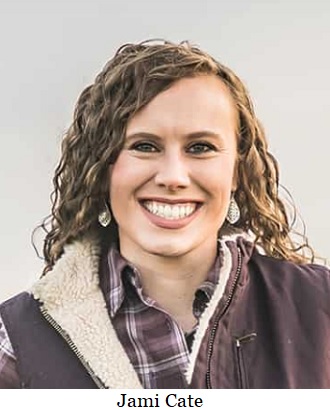




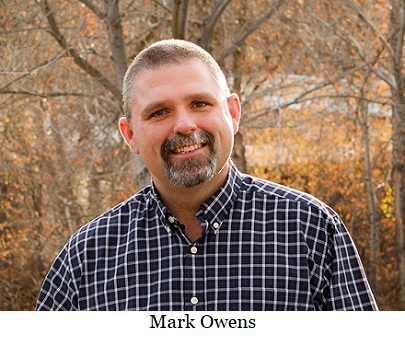
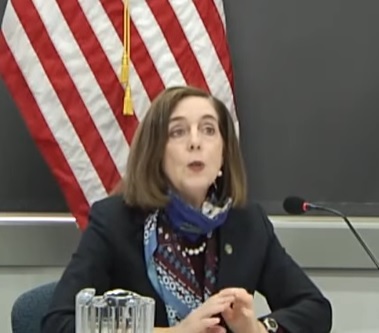

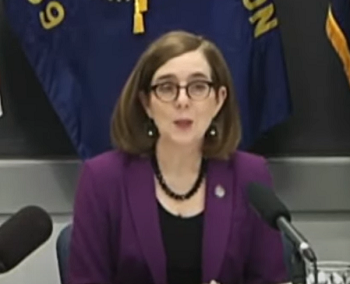
 Democrat Counties are doing better than rural ones. Washington and Hood River Counties lead with 71%, followed by Multnomah and Benton Counties with 70%. Vaccines seem not to be a priority in Lake County where scant more than a third of the residents have been vaccinated. Are the low numbers in Eastern Oregon due to an inability to overcome the logistical challenges of administering vaccines to a sparse population, or to the population's resistance to getting vaccinated -- perhaps driven by the sparseness of the population. Someone who lives 30 miles from the nearest town and 10 miles from the nearest neighbor might not see the need.
Democrat Counties are doing better than rural ones. Washington and Hood River Counties lead with 71%, followed by Multnomah and Benton Counties with 70%. Vaccines seem not to be a priority in Lake County where scant more than a third of the residents have been vaccinated. Are the low numbers in Eastern Oregon due to an inability to overcome the logistical challenges of administering vaccines to a sparse population, or to the population's resistance to getting vaccinated -- perhaps driven by the sparseness of the population. Someone who lives 30 miles from the nearest town and 10 miles from the nearest neighbor might not see the need.

